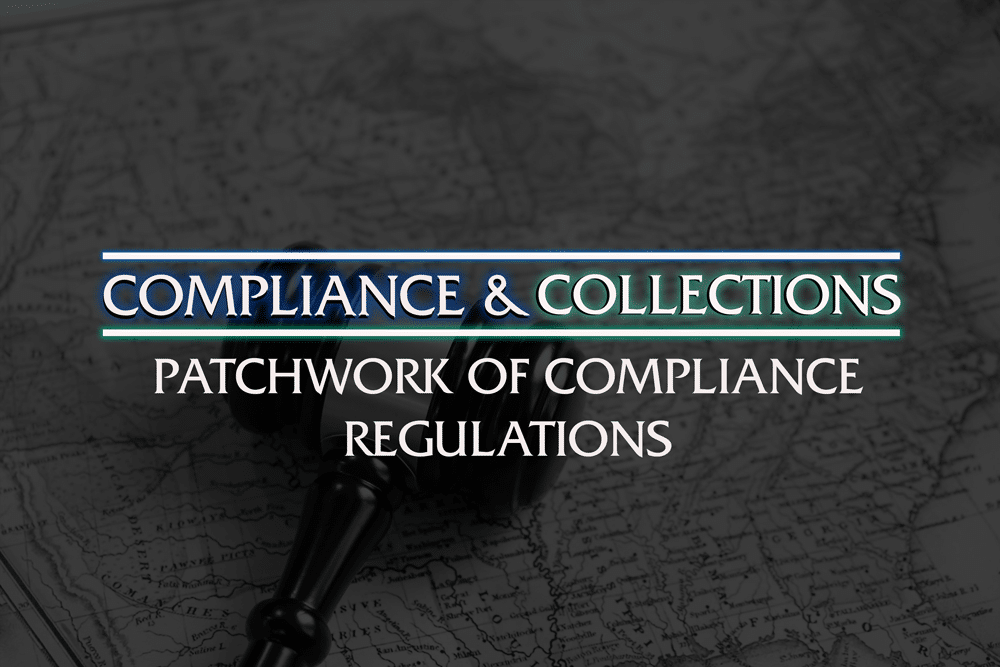Anyone working in the collections space should be familiar with the federal Fair Debt Collection Practices Act (“FDCPA”) and its regulation, Regulation F; but did you know that there are multiple debt collection laws and regulations at the state and local level too?
State and local laws and regulations often mirror aspects of the FDCPA, however, there are a handful which are remarkably different from the FDCPA. In fact, the FDCPA makes clear that it is not designed to “annul, alter, or affect, or exempt any person” from “complying with the laws of any State with respect to debt collection practices, except to the extent that those laws are inconsistent with any provision of [the FDCPA], and then only to the extent of the inconsistency” (refer to 15 USC § 1692n). The FDCPA goes on to clarify that “a State law is not inconsistent with [the FDCPA] if the protection such law affords any consumer is greater than the protection provided by [the FDCPA].” Therefore, debt collectors collecting nationally have to grapple with and reconcile a patchwork of federal, state, and municipal debt collection laws and regulations when collecting in multiple states.
It is no simple feat to build and maintain a compliance program which keeps a debt collector in compliance with this patchwork of differing and competing debt collections laws and regulations. Debt collectors take different approaches to stay in compliance—from training their collectors on each and every state law and regulation, to deciding not to collect all together in a particular state/locality. Ten years ago when I first started in the industry, I remember compiling a job aid of all the state and local laws debt collectors had to remember and abide by—it was long and nuanced.
For example, the FDCPA explicitly permits debt collectors to speak to a consumer’s spouse without such communication resulting in a third party disclosure (see 15 USC § 1692c(d)), whereas some states such as Arizona and Connecticut are silent on this issue and other states, such as Iowa, consider spouses as third parties. In those states, a consumer must provide their consent in order for a debt collector to speak with their spouse. Another example is communication frequency limitations. While Regulation F provides parameters for call frequency (i.e., calls made in excess of 7 times in a 7 day consecutive period, and calls within 7 days of having had a phone conversation, are presumed harassing), Massachusetts has an entirely different call frequency regime. Massachusetts outright prohibits debt collectors from engaging any consumer in a communication by phone (i.e., calls and texts) more than twice in a 7 day period. While these phone restrictions are similar, they are nuanced nonetheless (e.g., one applies only to calls while the other applies to calls and texts; one in a presumption of harassment and the other is an outright prohibition, etc.) These are just a few examples to illustrate how there may be little distinctions and differences between the FDCPA/Regulation F and state/local laws.
In an effort to simplify how many rules debt collectors have to learn and abide by, some debt collectors design and adopt policies which reconcile as many of the laws and regulations as it can for a particular topic. For example, choosing to adopt the strictest law/regulation as a company policy so that it applies across the board is one strategy some companies may adopt. While this approach will help a debt collector meet or exceed a state law requirement, this approach can unnecessarily limit a debt collector’s ability to communicate and/or collect in more places than necessary, thereby undermining those state economies that have no such restrictions.
While the patchwork may seem daunting, this is an area ripe for compliance innovation—where technology can be leveraged to automate controls and guardrails. For example, instead of requiring debt collectors to memorize multiple state laws/regulations, controls can be designed to automate guardrails for state laws in a collection system. Here at TrueAccord, compliance has a close partnership with its product and engineering teams, to help leverage technology when laws and regulations are introduced or changed. While technology will not replace a compliance monitoring team, it has the potential to increase the efficiency and efficacy of any human monitoring by helping front line agents understand their state by state requirements and compliance teams focus their auditing and monitoring efforts.
*Lauren serves as TrueAccord’s Associate General Counsel. This blog is not legal advice. Legal advice must be tailored to the particular facts and circumstances of each unique matter.
